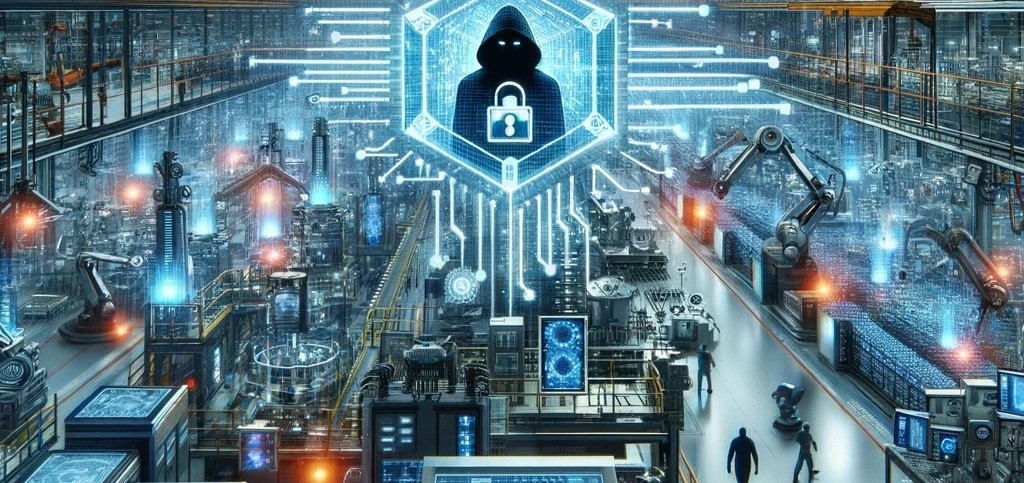In an era where the manufacturing sector increasingly embraces digitization and interconnectivity, a new breed of challenges emerges, prominently featuring cybersecurity threats. The digital transformation, while driving efficiency, scalability, and innovation, has concurrently opened the floodgates to a plethora of cyber risks, ranging from data breaches to full-fledged cyberattacks that can paralyze production lines, compromise intellectual property (IP), and jeopardize customer data. With the advent of artificial intelligence (AI), the landscape of these threats is becoming even more complex and formidable.
The Growing Risk Landscape
As factories integrate more deeply with the Internet of Things (IoT), cloud computing, AI, and other digital technologies, the attack surface widens. Cybercriminals, spotting the opportunity, have become more sophisticated, employing AI and machine learning to launch targeted attacks that exploit the specific vulnerabilities of interconnected manufacturing systems. These AI-powered attacks can adapt in real-time, evading detection with unprecedented efficiency. Meanwhile, insider threats also pose a significant risk, whether through malice or negligence, further complicating the cybersecurity challenge.
AI: A Double-Edged Sword
The integration of AI into cybercriminal activities marks a significant evolution in the threat landscape. AI algorithms can analyze vast amounts of data from various breaches to identify patterns and vulnerabilities much faster than human hackers. This capability enables cybercriminals to craft highly targeted phishing campaigns, automate the discovery of new exploits, and even use AI to control malware and ransomware in more sophisticated, adaptive ways.
Conversely, AI also holds the promise of bolstering cybersecurity defenses. Advanced anomaly detection systems powered by AI can monitor network traffic and identify suspicious activities that deviate from the norm, often catching breaches before they can cause significant damage. Furthermore, AI can automate routine security tasks, freeing up human security experts to tackle more complex challenges.
The Potential Consequences
The stakes are significantly raised with AI in the arsenal of cybercriminals. A successful cyberattack can now be more devastating, with AI-enhanced malware spreading faster and hiding more effectively from traditional cybersecurity measures. The theft of IP, facilitated by AI’s ability to sift through and interpret vast datasets, can give competitors or nation-states an unwarranted edge, eroding competitive advantages built over years. Moreover, breaches involving customer data can erode trust, leading to long-term reputational damage and legal repercussions.
A Blueprint for Cyber Resilience
- Enhanced Cybersecurity Awareness: The importance of cybersecurity awareness becomes even more critical in the age of AI. Training must evolve to include awareness of AI-specific threats and how AI can be leveraged by both attackers and defenders.
- Adopting AI in Defense: Proactively incorporating AI into cybersecurity strategies can help in early detection and response to AI-powered threats. AI can analyze patterns and predict potential attacks before they happen, providing a crucial advantage in the cybersecurity arms race.
- Robust Incident Response Planning: AI can also play a role in incident response, helping to quickly analyze the scope of a breach and automate certain response protocols, thereby reducing the time to resolution.
- Collaboration and AI Ethics: As AI technologies become more integrated into cybersecurity, ethical considerations and collaborative efforts in AI development and regulation become paramount. Sharing AI threat intelligence and best practices can help elevate the overall security posture of the manufacturing sector against AI-powered threats.
Looking Ahead
The digital transformation of manufacturing, coupled with the rise of AI, presents a dual-edged scenario: vast opportunities for growth and innovation, alongside significant cybersecurity risks. Manufacturers must navigate this new frontier with vigilance, leveraging AI not only to drive business forward but also to fortify defenses against increasingly sophisticated cyber threats. The future of manufacturing in the digital age depends not just on embracing technology, but also on ensuring that technology is secure, resilient, and trustworthy.

